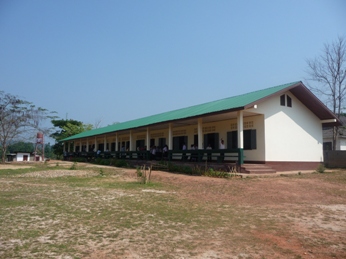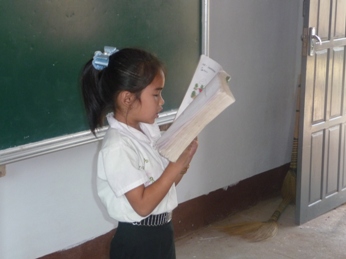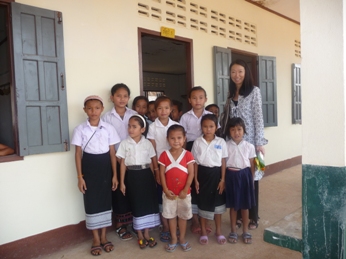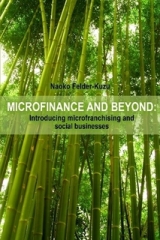
From June 20th to July 2, I attended the Executive Program in Social Entrepreneurship (EPSE) at Stanford Graduate School of Business which was one of the greatest learning experiences I’ve ever had. The courses of this rich and intensive program were interactive and diverse covering topics such as; mission (Jim Phills), strategy and execution (Robert Burgelman), Innovation (Jim Phills), social entrepreneurship by design (Jim Patell) how to change things when change is hard (Chip Heath), building and leading effective teams (Deb Gruenfeld), the power of social media (Jennifer Aaker), role of power and influence for leading large systems change (Jeff Pfeffer), balancing social and business objectives (Bill Barnett). In addition to the inmense knowledge that the class acquired learning from the superb Stanford faculty, the participating 48 social entrepreneurs that traveled from 15 different countries learned so much from each other and formed long-lasting friendships. One such great social entrepreneur and a dear classmate, Ben Stone, from Indego Africa has written an excellent summary of this program. Thanks Ben!
Category Archives: social entrepreneurship
Reflections after 2010 Skoll World Forum

This year’s title (theme) of the Skoll World Forum was “Catalysing Collaboration” and I believe it fully lived up to it. The program reflected and encouraged much more interaction than in previous years. No doubt the OxfordJam programmes running parallel to the forum and the fact that many of us got stranded due to the volcano eruption resulted in further discussions and collaboration. There are many videos and podcasts for anyone who would like to see or hear some sessions. One of the most inspiring speeches was from Caroline Casey delivered at the closing plenary. Blog discussions after the Forum (see socialedge ) are also very interesting to follow. There seems to be an amazing energy and momentum which is expanding the sphere of social entrepreneurship from a “small club of unreasonable people” to mainstream. Perhaps the definition of “social entrepreneur” might not be enough to accomodate the many people that are joining the movement. Call them changemakers (as Bill Drayton refers to them) or maybe a new word like social interpreneurship (see Peter Deitz’s blog): what matters is that with more people trying to make a difference and with more interaction and collaboration there is renewed hope to tackle the enormous problems that society faces today.
Socential: a Swiss start-up launches marketplace for social entrepreneurship
(Disclosure: the author is in the management team and in charge of social investment management at Socential)
Socential, a Swiss start-up has launched an online platform to connect social investors to social entrepreneurs projects aiming to empower system changing solutions to the world’s social problems. The platform was launched as a pilot in January this year featuring Swiss social entrepreneur’s projects and the latest release this April has featured projects from the internationally acclaimed social entrepreneur Bunker Roy from Barefoot College.
Visit to Room to Read school in Laos

On February 8th we visited the offices of the Room to Read in Laos and the Napheui Primary School (90 minutes by car from Vientianne) which we supported to build with some help from our friends in Switzerland. Walking up towards the school building and hearing the children either reading out loud, responding to questions posed by the teachers, or just simply giggling made us smile. By the way, the school building has 6 rooms – 5 classrooms and a library. In Laos, primary school takes 5 years. 
Even though we knew that Room to Read works effectively together with the community and the local government, actually seeing how the stakeholders collaborate was a great experience. We were received like “dignitaries” by students, local government officials and senior representatives of the village.
 Some statistics that we got from the village chief’s presentation: The population of the village is 891, there are 140 families, 104 children attend “our” primary school. Officially, 57 girls, the rest boys. (p.s. it felt like there were quite a few more girls than boys at least on the day we visited) We are extremely happy that we could be part of such a wonderful project. See more pictures of the visit.
Some statistics that we got from the village chief’s presentation: The population of the village is 891, there are 140 families, 104 children attend “our” primary school. Officially, 57 girls, the rest boys. (p.s. it felt like there were quite a few more girls than boys at least on the day we visited) We are extremely happy that we could be part of such a wonderful project. See more pictures of the visit.
Book: Microfinance and Beyond: Introducing microfranchising and social businesses

This book introduces innovative social/business models that provide sustainable solutions to the problem of poverty and portrays the insipiring people behind them.You can find an update on microfinance, BOP (base of the pyramid) initiatives, and microfranchising all which are improving the lives of the 4 billion people living at the BOP. VisionSpring, an innovative social microfranchising enterprise with the mission to reduce poverty and generate opportunity through the sale of affordable reading glasses is featured as a model case. The aim of this book was to share my insights on 1) how the business and social worlds have been converging, setting the stage for these innovative models to emerge, 2) how these models, together with the advent of Web 2.0, are creating a strong and positive movement towards a more responsible, sustainable and kinder world and 3) how all of us could make a difference.
This book is the updated English version of the German book that was published last year. I used lulu.com to publish this and I can recommend it.
Room to Read selected as FT’s Seasonal Appeal 2009-2010
Room to Read (RtR), a social enterprise that has been providing educational opportunities in a sustainable way in the developing world has been selected as the Financial Times seasonal appeal for 2009-2010. This is not about microfinance but RtR is an amazing organization that I have followed and featured in January 2007. Last year thanks to the sponsorship of many of my friends we supported RtR to build a school in Laos. We were impressed by the management lead by John Wood who designed a scalable and sustainable model (by partnering with the local communities) to provide education to the world’s poor children by building schools and libraries, girls’ education programs (10 year scholarships) and local language publishing programs. In less than a decade since inception RtR has built 832 schools, 7526 libraries, awarded 8786 girls scholarships, published 334 local language books and distributed 6 million books, benefitting 3.1 miliion children. John initiated RtR with a vision to provide educational access and opportunity to 10 million children in the developing world. Looks like he will reach his goal earlier than he thought. FT carried a full page article in today’s edition describing the achievements and goals of RtR. Congratulations to John and the whole team of RtR !
Kiva’s growing pains
Today’s NY Times article on Kiva describes the recent online debate started a month ago by David Roodman’s blog titled “Kiva Is Not Quite What It Seems” which criticized Kiva’s misleading marketing on person-to-person microlending. Matt Flannery, Co-Founder of Kiva responded and reacted (by updating and improving on how Kiva explains itself to its user) to David’s blog and to the NY Times article in an admirable way. As a supporter, promoter and lender to Kiva I believe that these online debates are healthy as it promotes transparency and makes innovative enterprises like Kiva an even stronger organization. Kiva has been a poster child for social entrepreneurship and in only 4 years have been able to create a platform that facilitates individuals (over 580,000) of all ages to participate in alleviating poverty with USD 25 (just recently crossed the USD 100 million mark). The phenomenal growth and its success also attracts attention. Constructive criticism is healthy, bad PR is harmful. I believe and trust that Kiva will emerge stronger from these controversies.
Kiva loans surpass USD 100 million!
On Oct 31st, Kiva lender loans surpassed the USD 100 million mark! Congratulations to the Kiva team especially Matt and Premal for achieving this milestone. That is a lot of 25 dollar bits. I went back to check my first entry on Kiva when I congratulated them on getting their 501(c) status which was in Sept 2006 . Kiva has achieved so much in 4 years inspiring more than half a miilion people in the world to get engaged to empower people in developing countries.
What is Impact Investing?
“Impact investments aim to solve social or environmental challenges while generating financial profit. Impact investing includes investment that range from producing a return of principal capital to offering market-rate or even above-market financial returns. Although impact investing could be categorized as a type of “social responsible investing” (SRI) it contrasts with negative screening which focuses primarily on avoiding investments in “bad” or “harmful” companies -impact investors actively seek to place capital in businesses and funds that can harness the positive power of enterprise.” (source:based on GIIN)
I first heard this expression in spring 2008 at the Skoll Forum in Oxford described by Antony Bugg-Levine of the Rockefeller Foundation. (I thought I finally found the proper word to describe what I do, I am an impact investment advisor) A year later at the 2009 Skoll Forum, the Monitor Institute presented an excellent report titled Investing for Social and Environmental IMPACT and also A. Bugg-Levine announced that the Global Impact Investment Network (GIIN) was being formed. In Sept at the SOCAP 2009 in San Francisco one could confirm that “impact investing” had become the widely accepted expression by the rapidly growing social capital investment industry. On Sept 25th 2009, GIIN was officially launched and announced its 25 founding members of the GIIN Investor’s Council at the Clinton Global Initiative. A recent article in the Economist also profiles impact investing.
Over the past few years many new expressions have been created to describe investing for social and environmental impact and financial return. These include double or triple bottom line investing, blended value investing and BOP investing. Needless to say microfinance investments is one of the leading and successful examples of this type of investment. All these expressions are valid in their own right; however, it confuses the investors and makes it difficult to build the market mechanisms for this nascent industry to efficiently grow. It is great that we now have a clear terminology and definition and an institution such as GIIN which is dedicated to increasing the effectiveness of impact investing. Other great initiatives in this area include The Global Social Investment Exchange (GSIX) and Nexii, the electronic transactions and communication platform for the social and environmental markets.
A MUST READ- The Blue Sweater by Jacqueline Novogratz
Jacqueline Novogratz is founder and CEO of Acumen Fund a very successful and fast growing nonprofit venture capital firm for the poor that invests in sustainable enterprises bringing healthcare, safe water, alternative energy, and housing to low income people in the developing world. She founded Acumen Fund in 2001 and by the end of 2008 this firm had approved more than $40 million on investments in 40 enterprises serving the poor, creating through these enterprises 23,000 jobs providing basic services like water and life saving malaria bed nets to millions of low income people around the world. Her book The Blue Sweater -Bridging the Gap between Rich and Poor in an Interconnected World-is an inspiring memoir of a woman who left a career in international banking to spend her life on a quest to understand global poverty and find powerful new ways of tackling it. Many important lessons can be learned just by following her heartbreaking and hilarious stories of starting a microfinance institution and a bakery in Rwanda. Also the book is packed with examples that teach us humility and that good intentions alone are not enough as described through some failed programs of traditional charity that have left the poor people in the same or worse conditions. One also learns about the Rwandan genocide through the stories of the survivors that Novogratz had worked with. The book is inspiring, educational, entertaining and a must read for everyone and especially for those who aspire to make a difference.
